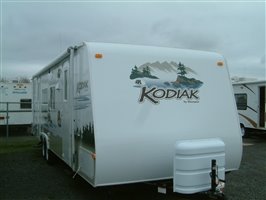
Last fall FEMA was talking us about moving and I asked if we could get ours tested. They said sure, someone will call you and set something up. I wasn't hopeful. FEMA never returns phone calls. I was surprised when they called a couple of days later. We set a date to meet and test the trailer. That was October 28, 2008.
On January 2, 2009 FEMA taped a note to the trailer door, we were on vacation. After we got back we traded phone calls because the person who contacted us said that he needed to meet with us in person to deliver the report. Unfortunately he was out of Baton Rouge was only occasionally in New Orleans and couldn't predict when he would be back. After a couple of tries, he stopped returning calls. He probably was transferred.

A couple of weeks ago I started trying to get a copy of the report. Our New FEMA Person (the only one we've talked to more than once) called. She had the numbers, and more amazingly gave them to me over the phone.
On October 28, 2008 our trailer tested at 63 parts per billion (63 ppb).
She is going to send me a report as soon as she can find it. I'm beginning to think she might.
For perspective I'd like to offer this OSHA regulation;
Permissible Exposure Limit (PEL) -According to EPA
*1910.1048(c)(1)*
Time-Weighted Average (TWA): The employer shall assure that no employee is exposed to an airborne concentration of formaldehyde which exceeds 0.75 parts formaldehyde per million parts of air (0.75 ppm) as an 8-hour TWA.
*1910.1048(c)(2)*
Short Term Exposure Limit (STEL): The employer shall assure that no employee is exposed to an airborne concentration of formaldehyde which exceeds two parts formaldehyde per million parts of air (2 ppm) as a 15-minute STEL.
Looks like we off gassed down to "normal" levels.Average concentrations in older homes without UFFI (Urea-formaldehyde foam insulation) are generally well below 0.1 (ppm). In homes with significant amounts of new pressed wood products, levels can be greater than 0.3 ppm.
California through the California Air Resources Board has adopted standards that apply to lumber products only, not finished structures. Unfortunately other materials may contribute to Formaldehyde levels in a structure including foam insulation, fabric and carpet, to name a few.
EPA is also proposing some controls although they seem to be following California's lead, and regulating products not finished structures.


No comments:
Post a Comment